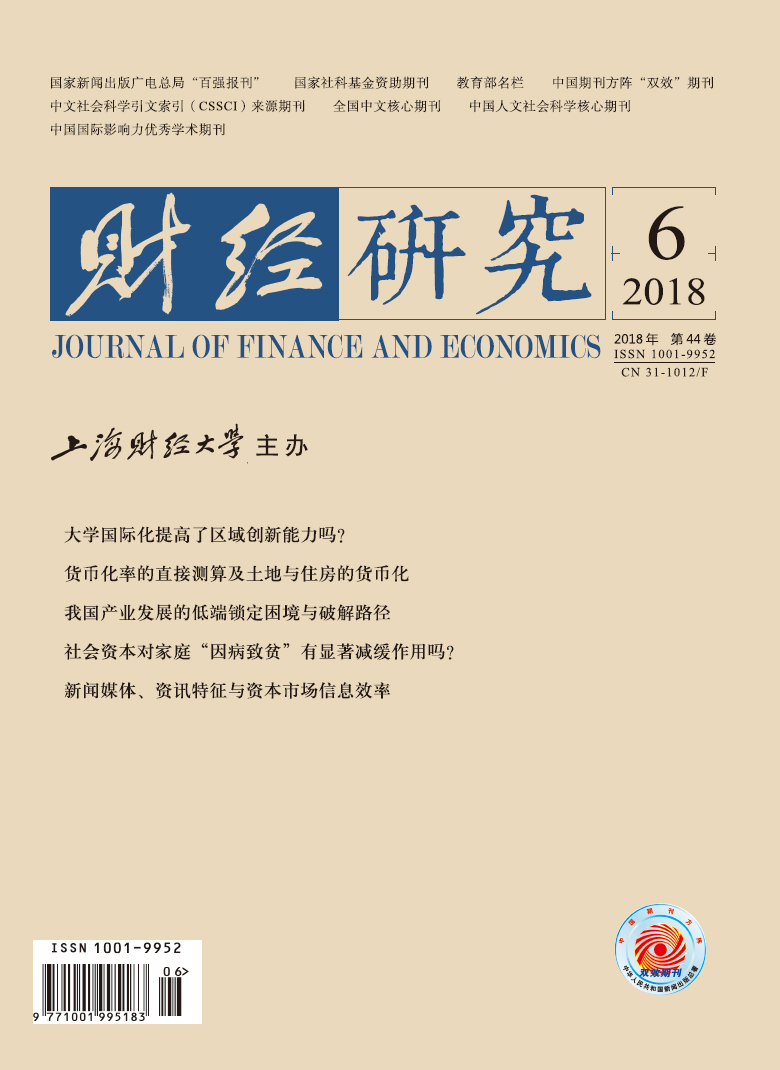The imbalance of regional development has become a major strategic issue that needs to be resolved urgently during the decisive stage in building a moderately prosperous society in all respects. Raising total factor productivity is the key in the stage of economic high-quality development. However, implementing the innovation-driven development strategy and replacing old growth drivers with new ones will intensify the spatial imbalance of total factor productivity (TFP), which will bring new pressures and challenges to the coordinated regional development in the new era. It is urgent to reveal the relationship between TFP and regional economic disparity, and answer the question whether the TFP has become the determinant of regional economic disparity in China. These factors determine not only whether TFP can become the key driver to narrow the regional economic disparity and achieve the coordinated regional development, but also whether the supply-side structural reform and the coordinated regional development could integrate deeply. This paper applies the relational data paradigm to regional economic disparity for the first time. Based on China’s provincial data from 2001 to 2015, we explore the relationship between TFP and the regional economic disparity in China by using the quadratic assignment procedure (QAP). According to QAP-based correlation analysis, there is a significant positive correlation between TFP and regional economic disparity, but compared with other factors, the relationship between them is the least intimate. Based on the full, sub-period and year-by-year sample QAP-based regression analysis shows that whether considering the control variables or not, TFP has a positive impact on the regional economic disparity. Although the impact of TFP on regional economic disparity is increasing, it has not become the determinant of China’s regional economic disparity. The capital accumulation and urbanization play major roles in China’s regional economic disparity. The robustness test which the capital stock accounting based on different capital depreciation rates shows that the conclusions of this paper are robust. The enlightenment of this paper is that in the process of implementing the coordinated regional development strategy, we must pay particularly attention to exert the sufficient effect of the balanced allocation of capital elements and the balanced development of urbanization in order to narrow the regional economic disparity. Meanwhile, in the process of furthering supply-side structural reform, we must actively promote the spatial balanced development of new drivers and make TFP become a new driving force of the coordinated regional development in the new era. The marginal academic contribution of this paper is that we apply the relational data paradigm in the study of regional disparity for the first time. It provides a new paradigm for exploring the causes of regional economic disparity and some new empirical evidence to reveal the impact of TFP on regional economic disparity. As the disparity between any two regions is essentially a kind of relationship, it creates the conditions for exploring regional disparities from the angle of relational data. This paper also provides a new perspective for the study of regional disparity in a broader sense.
 / Journals / Journal of Finance and Economics
/ Journals / Journal of Finance and EconomicsJournal of Finance and Economics
LiuYuanchun, Editor-in-Chief
ZhengChunrong, Vice Executive Editor-in-Chief
YaoLan BaoXiaohua HuangJun, Vice Editor-in-Chief
Has the Total Factor Productivity Become the Determinant of Regional Economic Disparity in China
Journal of Finance and Economics Vol. 44, Issue 06, pp. 50 - 63 (2018) DOI:10.16538/j.cnki.jfe.2018.06.004
Summary
References
Summary
[1]Chen X S, Xu Y. Factors affecting China’s regional gap: An empirical study[J]. Social Sciences in China, 2004, (5): 117-129. (In Chinese)
[2]Fan G, Wang X L, Ma G R. Contribution of marketization to China’s economic growth[J]. Economic Research Journal, 2011, (9): 4-16. (In Chinese)
[3]Fu X X, Wu L X. The role of total factor productivity in China’s regional disparities[J]. The Journal of World Economy, 2006a, (9): 12-22. (In Chinese)
[4]Fu X X, Wu L X. Technical efficiency, capital deepening and regional disparity[J]. Economic Research Journal, 2006b, (10): 52-61. (In Chinese)
[5]Guo J L, Wang H W. Regional capital flows and economic disparities in China[J]. Management World, 2003, (7): 45-58. (In Chinese)
[6]He C F, Liang J S. The time and space change in the difference between China’s regional economies: commercialization, globalization and urbanization [J]. Management World, 2004, (8): 8-17. (In Chinese)
[7]Li J, Meng L J, Wu F X. Re-examination of development differences in China: factor accumulation or TFP. The Journal of World Economy. 2006, (1): 12-22. (In Chinese)
[8]Peng G H. The disparity of income, TFP and the convergence hypothesis in Chinese provinces[J]. Economic Research Journal, 2005, (9): 19-29. (In Chinese)
[9]Wu W Z, Liu Y B. Industrial structure changes and income inequality[J]. 2018, (2): 22-33. (In Chinese)
[10]Research Group on China’s Growth and Macroeconomic Stability. Urbanization, industrial efficiency and economic growth[J]. Economic Research Journal, 2009, (10): 4-21. (In Chinese)
[11] Krackhardt D. Predicting with networks: Nonparametric multiple regression analysis of dyadic data[J]. Social Networks, 1988, 10(4): 359—381.
[12] Mankiw N G, Romer D, Weil D N. A contribution to the empirics of economic growth[J]. The Quarterly Journal of Economics, 1992, 107(2): 407—437.
[13]Mao Q, Sheng B. The impact of tariff reductions on firm dynamics and productivity in China: Does market-oriented transition matter?[J]. China Economic Review, 2017, 45: 168—194.
[14]Scott J P. Social network analysis[M]. 4th ed. London: Sage, 2017.
[15]Zhang Q, Zou H-F. Regional inequality in contemporary China[J]. Annals of Economics and Finance, 2012, 13(1): 113—137.
Cite this article
Liu Huajun, Peng Ying, Pei Yanfeng, et al. Has the Total Factor Productivity Become the Determinant of Regional Economic Disparity in China[J]. Journal of Finance and Economics, 2018, 44(6): 50-63.
Export Citations as:
For
ISSUE COVER
RELATED ARTICLES




 7797
7797  10650
10650

